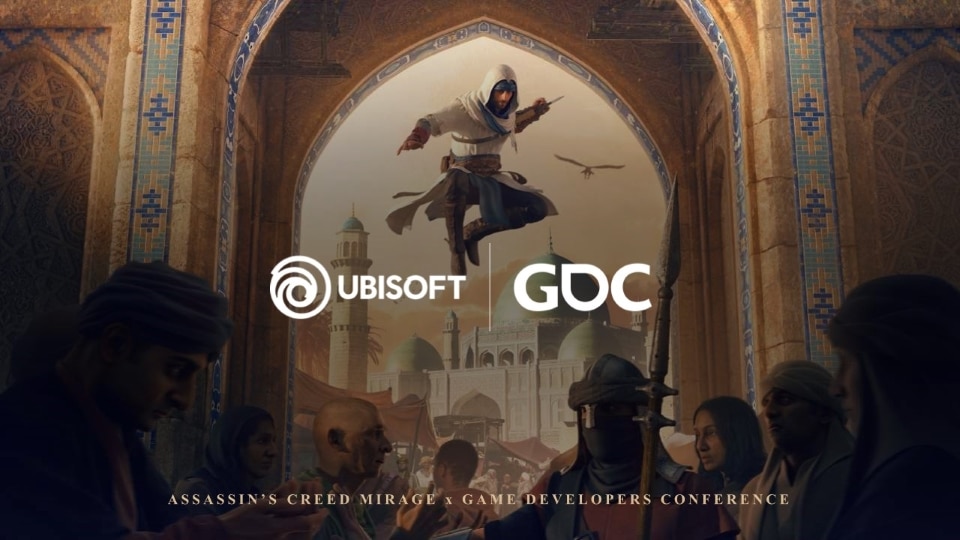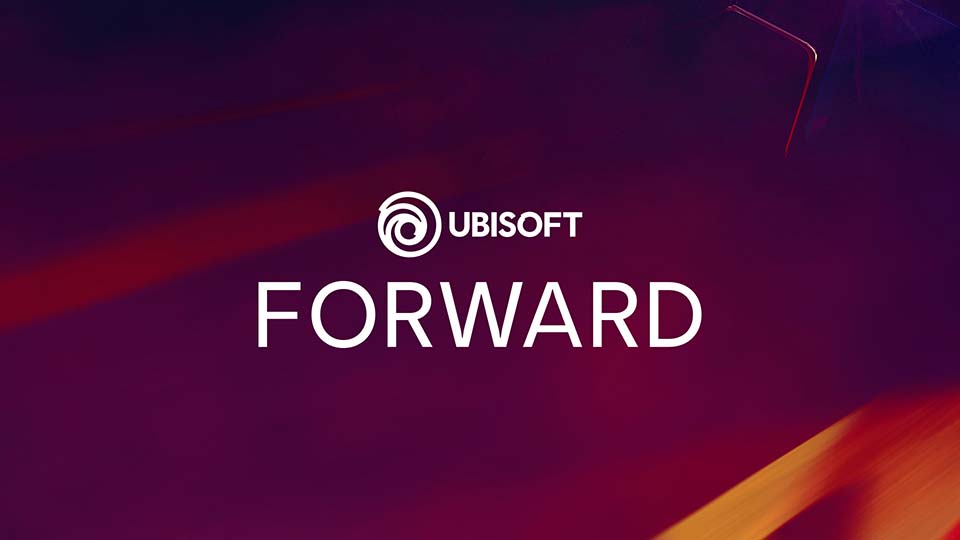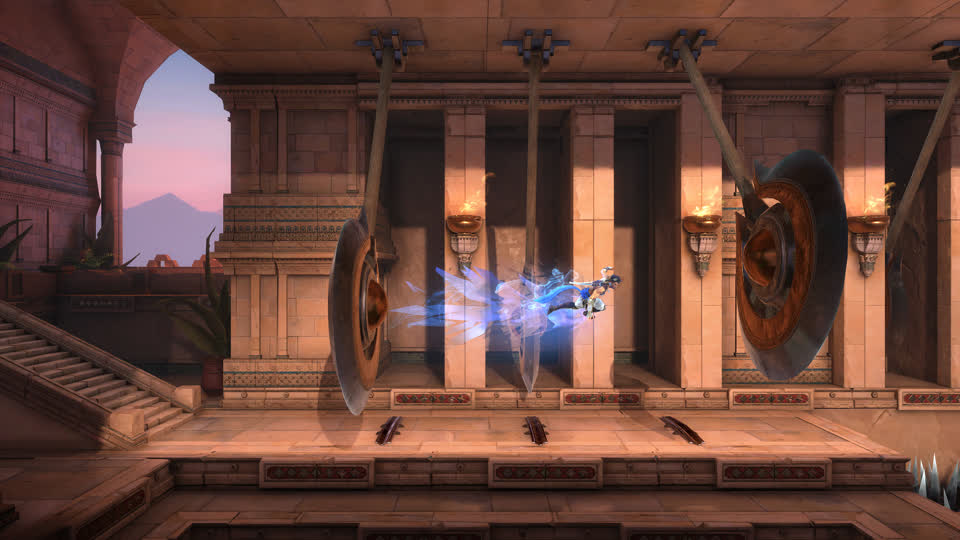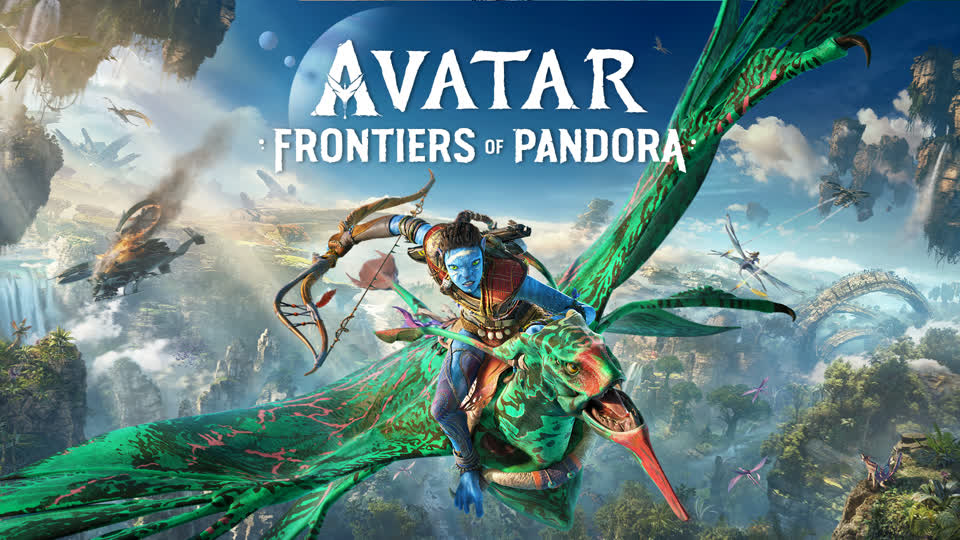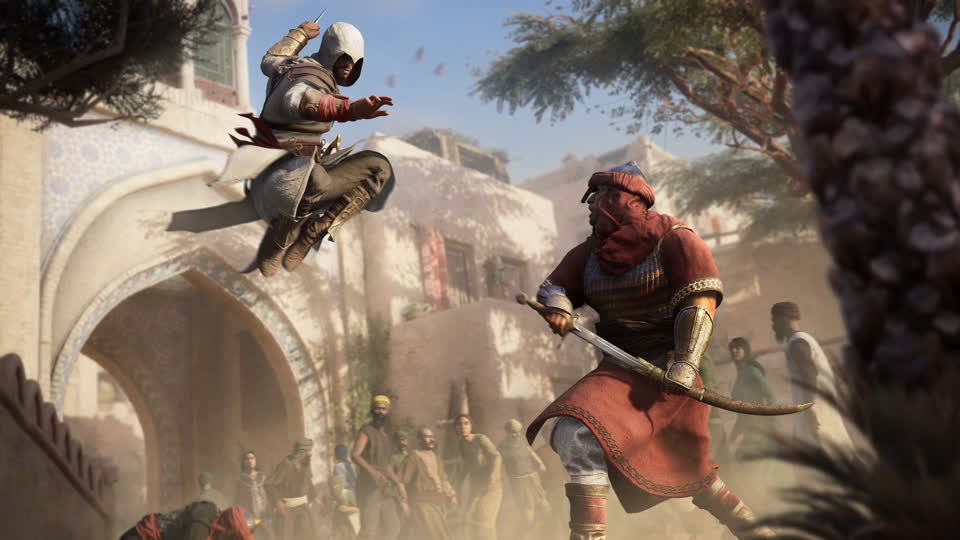Assassin’s Creed Mirage was envisioned as an homage to its franchise – a celebration of how it began and what it accomplished between 2007’s Assassin’s Creed and 2023’s Mirage. Beginning as an idea for a DLC expansion that would take Eivor to the Middle East, it grew into a standalone prequel starring Basim, the enigmatic Hidden One from Valhalla. Developed as a shorter experience by Ubisoft Bordeaux, the return-to-roots game presented a distinctive set of challenges, which are explored in the March 22 GDC talk “Between Legacy and Modernity: Creating an Homage Game to the 15-Year-Old Assassin’s Creed Franchise.”
![[UN] [ACM] GDC 2024 Postmortem Interview - IMG 1](http://staticctf.ubisoft.com/J3yJr34U2pZ2Ieem48Dwy9uqj5PNUQTn/725WfSNxoTA4OWjJ8p37Vj/311e53f9aa8262931e70ef04071c75c6/ACM_GDC_3_2.jpg)
During the talk, Creative Director Stéphane Boudon and Lead Producer Fabian Salomon discuss the game’s beginnings, its growth into a “remoot” – that is, something between a remake and a reboot – and how a streamlined approach helped them make tough choices and focus the game on the Assassin experience. To find out more, we spoke with Boudon and Salomon about some of the early concepts behind the game, a few features that didn’t make the cut, and how Mirage re-introduced and redefined stealth as a gameplay pillar.
In your talk, you mention that Assassin’s Creed Mirage began as a DLC for Valhalla, in which Eivor would visit the Middle East. What would that have looked like, based on the initial pitch?
Stéphane Boudon: It was a very early idea, and it was really just one slide in a PowerPoint presentation. So it was quite rough, and the whole idea was that we wanted to come back to the Middle East. It was more the driver of the first pitch. But we dug around in that era, the ninth century, to find out what we could expect about this region, what were the key locations, etc., and pretty quickly we found Baghdad, which was the center of this Islamic world – a bustling city, diverse. We saw all the stories around Baghdad, all this invention, all the things we could use as narrative materials, and of course it was clear that this city was a key location we should check. And as the means to visit Baghdad, Basim came up, because that’s where he grew up. When we decided to go standalone, we were pretty sure we would not use the 3Cs [character, controls, camera] of Eivor anymore [because playing as an Assassin meant an increased focus on, and refined approach to, stealth and parkour, as opposed to the “heavier” feel of a Viking], so we went with Basim.
If Baghdad wasn’t part of the initial pitch, was the idea to go back to one or more of the cities from the first game, like Acre, Jerusalem, or Damascus?
SB: Yeah, exactly. At first we looked at Jerusalem, Acre, and Damascus, and we even checked some Nabataean remains – all the locations that bring this vibe of the Middle East, because we know it's where we will find the Assassins as well. So we tried to connect every dot, even kind of recreate the story of Bayek – how Bayek could have, after Origins, created those Bureaus in the Middle East – and we had some information saying he created bureaus in a Nabataean city, for instance. So we followed the breadcrumbs that already existed, and took the best ideas from all this material.
Fabian Salomon: Chronologically speaking, starting from the idea of doing an expansion for Valhalla to creating a standalone game, we had to rethink the main character, so that's why we thought about Basim. Also, we saw that during the ninth century, Jerusalem, Acre, and Damascus were not at their peak, and not that interesting compared to what they were during the First or Second Crusades. Baghdad was a must-have, because in the ninth century, it was the most important cultural, religious, and scientific location in the Arabic World.
![[UN] [ACM] GDC 2024 Postmortem Interview - IMG 2](http://staticctf.ubisoft.com/J3yJr34U2pZ2Ieem48Dwy9uqj5PNUQTn/2TYFQKPQ8GNaMSD7ZMPtxv/dd43a33b5b836fd1fff7f76e1738b544/ACM_GDC_23_2.jpg)
In your presentation, you talk about how stealth was a much bigger consideration with Assassin’s Creed Mirage than in Valhalla, and that you took inspiration from the 2014 “Modeling AI, Perception, and Awareness in Splinter Cell: Blacklist” GDC talk to revamp stealth in Mirage. What are some examples of things you needed to change or add to make stealth a major pillar of the game?
SB: For us, the challenge with stealth was that it's a very demanding feature, and it has to be reliable for players. We looked at how we could be as fair as possible with detection and what is a good distance for detection – because if you are close to an NPC and he cannot see you, he looks incompetent, but if he easily spots you from afar, he seems super-powerful, and that feels super-unfair. So first, it meant making a lot of tweaks to a classic system of stealth mechanics. It meant a lot of playtests as well, and checking all the systems we already have, and what we can improve.
The NPCs’ vision cone was one of those, and in fact it’s faked – in real life, you see roughly 180 degrees, but here it’s shaped like a coffin [tapered inward toward the end to create a smaller zone of detection at a distance], and not a pure angle. It’s kind of cheating with physics to make players feel as though they’re in perfect control, and that it's a fair system. After that, we had the behavior of enemies to work on; they are surprised when they look at you, and we brought back a state of “searching,” which was not in Valhalla, and which gave a bit more granularity and readability to the behavior of those NPCs. The player can trust the system, understand it better, and do the right actions to not get caught.
![[UN] [ACM] GDC 2024 Postmortem Interview - IMG 3](http://staticctf.ubisoft.com/J3yJr34U2pZ2Ieem48Dwy9uqj5PNUQTn/7w3LxT8uqijjGxp65kelR0/f7152f28d015dba42e2ba1ef2b3dd585/ACM_GDC_27.jpg)
Assassin’s Creed Mirage is more urban than its last few predecessors, and so parkour was also a major focus. In your presentation, you talk about the creation of “highways” – unmarked but clear paths players can use to more efficiently parkour across rooftops and obstacles – and the need for “strike teams” to go through and polish them after beta. How do those highways develop? At what stage of development are they decided?
SB: Highways are something that have been created in Assassin's Creed from the beginning. I think the “highway” term comes from Assassin’s Creed Revelations, but even before that, developers tried to create clear paths. It started with these little pieces of white cloth that you encounter and that give you some kind of direction to say “hey, you can see some white cloths, and you will be able to reach a specific place if you take this path.” It's kind of a breadcrumb; it's artificial, but they’re just little pieces of information we give players.
Highways were something we thought of pretty early on, during the conception of the game. We already have the path on the big map, and we know that we need to easily reach this location and that location because the story asks for it, and we want to connect every important place in Baghdad with these highways. But at some point during the production, you have artists that will bring some visual elements. You also have gameplay that will bring in enemies, etc., and we have to keep polishing these places to make sure they work well until the end of the game. And that's why at some point we had to have a specific dedicated team at the end, after the beta, to really take care of these highways, because players want them to be reliable. They don't want them clumsy, or so unclear as to get lost in them.
Did those change a lot during testing? Did you notice, for example, that playtesters seemed to want to take certain routes where a highway didn’t necessarily exist? Or was it always more about more clearly directing players toward what's already there?
SB: Most of the time, it's directing players toward what’s already there, but we use data – because we have a lot of data that comes up from devs playing, but also player-specific data from playtests, and we are able to see a heat map of the moves of all those players. And if at some point we see that a specific path is taking a lot longer for some reason – because there is, I don't know, a new point of interest we put in at some point and didn't think about – this can tell us to build something more reliable here for players.
You also touch on specific features that had to be cut during development, partly because of a need to streamline development: a dog-commanding enemy, sandstorms, and a monkey companion for Basim. Can you talk a little more about what those would have been like, and why they didn’t work in the end?
SB: Of course, cutting features is never something we like to do. But for some cuts, sometimes there is a pretty good reason. The monkey companion is a good example: it was cut very, very early, as a concept on paper – but we cut it for many reasons. The first one is that it’s hyper-costly. It's a lot of animation; we’d have to mocap a monkey, and the means to do so were way beyond what we can do in Bordeaux, a smaller studio than Montreal. But even after that, when we look at it, monkeys in ninth-century Baghdad are a misconception; we tend to have monkeys in mind because of Aladdin. But accuracy is also important for Assassin’s Creed, and there were no monkeys in ninth-century Baghdad. So even if it was good for gameplay, we would probably have been saying something pretty false.
![[UN] [ACM] GDC 2024 Postmortem Interview - IMG 4](http://staticctf.ubisoft.com/J3yJr34U2pZ2Ieem48Dwy9uqj5PNUQTn/2E1W033e1PVo63PW3ko9SG/4d4d11f9ba88e228e2d3a94205f92495/ACM_GDC_24_2.jpg)
What was the original idea for it? Would it be a pickpocket that followed you around?
SB: Yes, the idea was, it would be able to do parkour and infiltrate specific locations to pickpocket keys, to be some kind of a decoy for attracting guards, etc.
What would sandstorms have added or subtracted from the game, other than visibility?
SB: Sandstorms were a complicated topic as well, and in fact we’d already seen sandstorms in Assassin's Creed Origins. That was pretty cool, but for us, what changed is that we wanted to make a city, a living city, and it was the center of the experience. In Assassin's Creed Origins, the sandstorms avoid the cities; we can find them only in the wild, where nothing else was happening. For us, it was not possible to do that, and it would have had a huge impact on how the player and NPCs would have to act – NPCs fleeing, having different animations, protecting themselves – it changed everything, everywhere, even the detection, the guards, and it had too much impact on all the systems to be able to make it complete.
The dog and dog-master enemies made it relatively far into production, getting cut during alpha. Was that a matter of having to develop a different kind of enemy AI? Was it just player sentiment against having to fight dogs in games?
SB: At some point during development, we have to focus ourselves on specific types of enemies to bring them up to a high standard. And when we discussed cutting things, there was an issue with the dog: we didn't have, at the start of the game, a way to have a nonlethal assassination on a dog. Even if we have sleep darts, sleep darts are not there from the get-go, and we don't give enough solutions to players to avoid killing the dog. There are also a lot of animal lovers on the production team – and I am one myself – so we didn’t want to oblige the player to kill animals. That was an easy cut.
With mounts, on the other hand, you went the opposite way and took extra steps to make them work well in the city – reducing their speed, putting blockers on staircases to keep them from climbing to the roofs, and new animations for Basim where he ducks his head under low obstacles.
SB: We could have removed the horse from the city – and honestly, people on the team proposed that – and it could have been OK. But it's a balance at some point. We have to look at always improving what we have done before, and never take back things that players take for granted. And I think they're right: Videogames are always an evolution from their old period, and that's why modernity is important here.
![[UN] [ACM] GDC 2024 Postmortem Interview - IMG 5](http://staticctf.ubisoft.com/J3yJr34U2pZ2Ieem48Dwy9uqj5PNUQTn/2ZUDFkmsWYAiNhetQJqbmn/1e1587562bd7c27d4db43abac03c590b/ACM_GDC_22.jpg)
Was there ever a version of the game where players could take the mounts upstairs and onto rooftops?
SB: Yeah, and I think Jean-Luc Sala, our art director, knows a way to bring your camel or your horse onto rooftops and doing parkour with it. It's still in the game.
Assassin’s Creed Mirage is out now on Xbox One, Xbox Series X|S, PS4, PS5, PC via the Ubisoft Store and Epic Games Store, and Amazon Luna, and is included with a Ubisoft+ Premium subscription.
